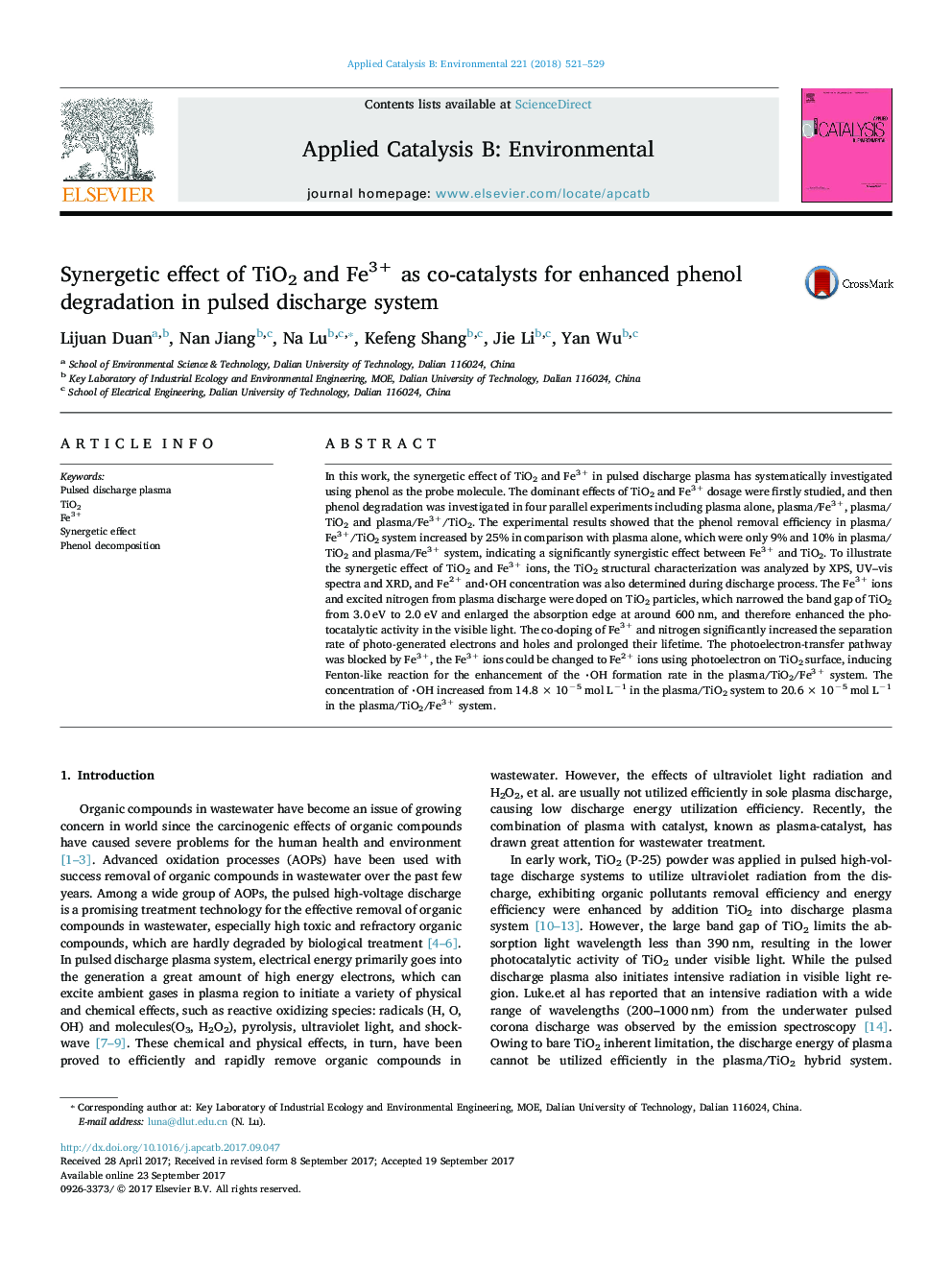| کد مقاله | کد نشریه | سال انتشار | مقاله انگلیسی | نسخه تمام متن |
|---|---|---|---|---|
| 6453491 | 1418799 | 2018 | 9 صفحه PDF | دانلود رایگان |

- The synergetic effect of TiO2and Fe3+ was explored in pulsed discharge system.
- The co-doping of Fe3Â +Â ions and excitednitrogen from discharge plasma on TiO2was verified by XPS, UV-vis and XRD analysis.
- Therole of TiO2in reduction of Fe3Â +Â to Fe2Â +Â was investigated.
- The Fe2Â +Â and OH concentration was determined during discharge process.
In this work, the synergetic effect of TiO2 and Fe3+ in pulsed discharge plasma has systematically investigated using phenol as the probe molecule. The dominant effects of TiO2 and Fe3+ dosage were firstly studied, and then phenol degradation was investigated in four parallel experiments including plasma alone, plasma/Fe3+, plasma/TiO2 and plasma/Fe3+/TiO2. The experimental results showed that the phenol removal efficiency in plasma/Fe3+/TiO2 system increased by 25% in comparison with plasma alone, which were only 9% and 10% in plasma/TiO2 and plasma/Fe3+ system, indicating a significantly synergistic effect between Fe3+ and TiO2. To illustrate the synergetic effect of TiO2 and Fe3+ ions, the TiO2 structural characterization was analyzed by XPS, UV-vis spectra and XRD, and Fe2+ andOH concentration was also determined during discharge process. The Fe3+ ions and excited nitrogen from plasma discharge were doped on TiO2 particles, which narrowed the band gap of TiO2 from 3.0 eV to 2.0 eV and enlarged the absorption edge at around 600 nm, and therefore enhanced the photocatalytic activity in the visible light. The co-doping of Fe3+ and nitrogen significantly increased the separation rate of photo-generated electrons and holes and prolonged their lifetime. The photoelectron-transfer pathway was blocked by Fe3+, the Fe3+ ions could be changed to Fe2+ ions using photoelectron on TiO2 surface, inducing Fenton-like reaction for the enhancement of the OH formation rate in the plasma/TiO2/Fe3+ system. The concentration of OH increased from 14.8 Ã 10â5 mol Lâ1 in the plasma/TiO2 system to 20.6 Ã 10â5 mol Lâ1 in the plasma/TiO2/Fe3+ system.
171
Journal: Applied Catalysis B: Environmental - Volume 221, February 2018, Pages 521-529